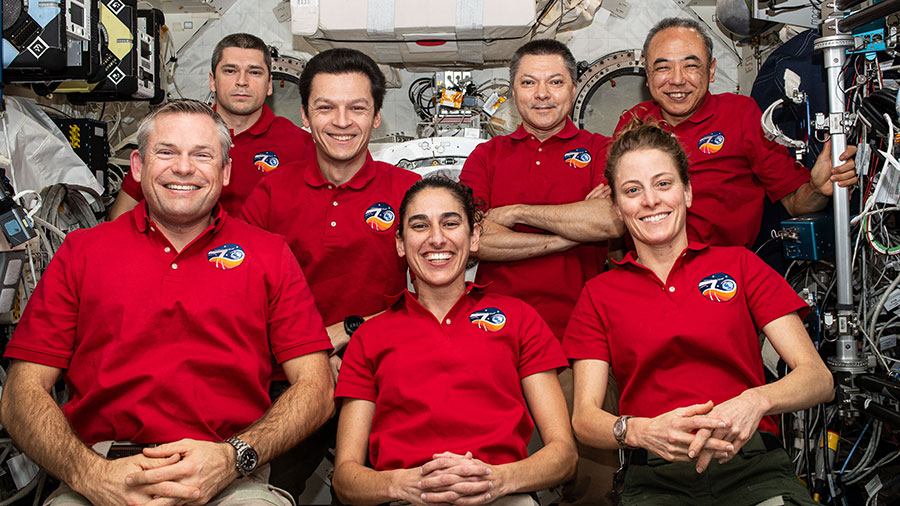
The Expedition 70 crew wrapped up the work week with microbiology, bioprinting, and ultrasound scans aboard the International Space Station. Cardiac research and fluid physics also rounded out the microgravity science schedule for the orbital septet.
Uncontrolled microbial growth is a potential threat to spacecraft possibly contaminating and corroding systems and affecting the health of space crews. Researchers are exploring how to identify and disinfect microbes to protect spacecraft and crews traveling longer and farther away from Earth.
NASA Flight Engineers Jasmin Moghbeli and Loral O’Hara partnered together and researched ways to control microbial growth inside the Kibo laboratory module. The duo took turns treating bacteria samples in Kibo’s Life Science Glovebox helping scientists learn how to promote successful long-term spaceflights and protect extreme environments on Earth.
Moghbeli also assisted Commander Andreas Mogensen of ESA (European Space Agency) as he removed tissue cassettes containing cardiac cells from the BioFabrication Facility. The 3D bioprinter is demonstrating the potential to manufacture human organs in space from existing patient cells. The samples are then stowed in an advanced sample processor for incubation allowing the tissues to cohesively form on a cellular level. Mogensen earlier studied water recovery and purification techniques under microgravity conditions.
O’Hara began her day conducting ultrasound scans and collecting blood pressure measurements with Flight Engineer Satoshi Furukawa from JAXA (Japan Aerospace Exploration Agency). The biomedical work was done in conjunction with doctors on the ground and is part of the CIPHER suite of 14 human research experiments. Afterward, Furukawa swapped cargo in and out of the SpaceX Dragon cargo spacecraft as it counts down to undocking from the station later this month and returning to important research samples to Earth.
Working in the Roscosmos segment of the orbiting lab, three cosmonauts began their morning conducting cardiac research. The trio of flight engineers, Oleg Kononenko, Nikolai Chub, and Konstantin Borisov, participated in the study that measures the bioelectrical activity of the heart as it rests in weightlessness. Afterward, the cosmonauts each participated in a computerized test solving problems for a study exploring how crews and mission controllers can communicate better.
Kononenko later examined eggs in an incubator for a space biology study then checked ventilation systems in the Nauka science module. Chub moved on and investigated how magnetic and electrical fields affect fluid systems in microgravity. Finally, Borisov worked on a variety of science tasks throughout the day including watering and photographing plants and configuring an array of research hardware.
Learn more about station activities by following the space station blog, @space_station and @ISS_Research on X, as well as the ISS Facebook and ISS Instagram accounts.
Get weekly video highlights at: https://roundupreads.jsc.nasa.gov/videoupdate/
Get the latest from NASA delivered every week. Subscribe here: www.nasa.gov/subscribe

I try to look up every time I can. It is amazing how this ISS moves so quickly. I really like it, and wave to them even though I know they can’t see me.
Hello , I watched on the 10 and 11 December 2023 as you went over my house in Merriwa NSW. It is so thrilling to see you go over the top of my house . As a 76 yr old who saw Neil Armstrong walk on the moon , I am in awe of the work you wonderful people do every day and the research you do . Thank you . I wave to you all and tonight waved my bright torch hoping you might see it . Yes it is almost Christmas and my inner child was just excited to see you in the dark night skies. Merry Christmas to you all , from my small rural community.
Hi, my 3 kids, wife and I watched you pass over our house in Toowoomba QLD Australia 9th December. We all waved and were amazed at the speed in which you were travelling. It was thrilling and we were all amazed. All the best up there and all our best wishes.